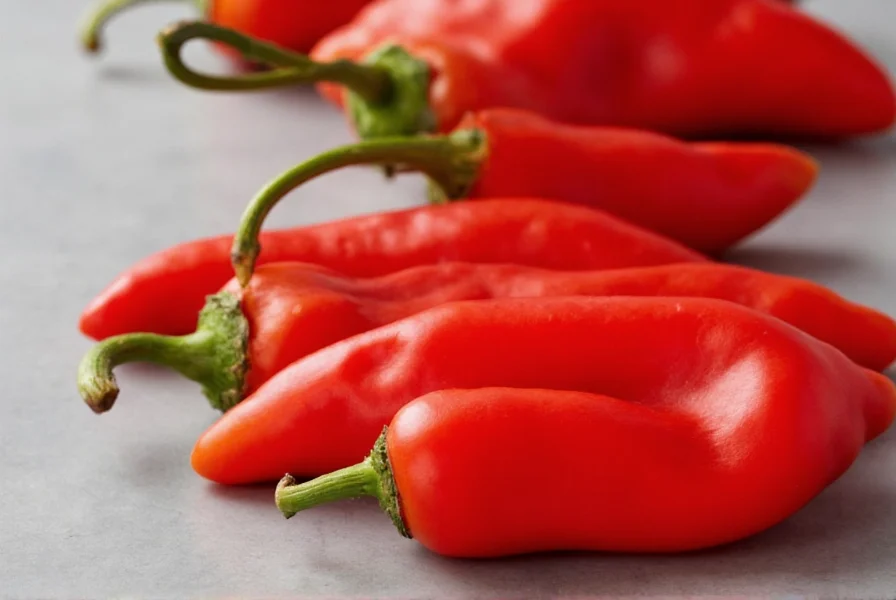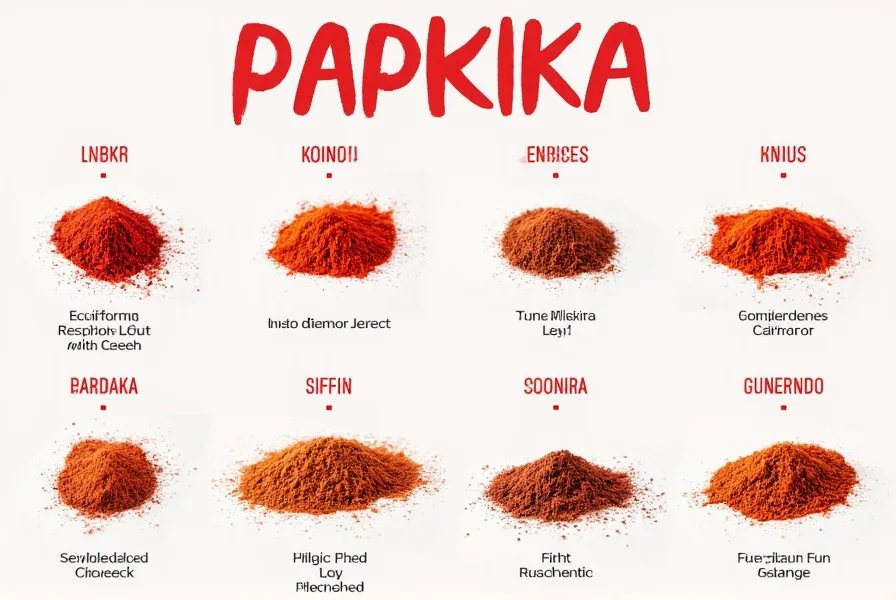Understanding paprika begins with recognizing its botanical origins. Derived from carefully selected sweet or chili peppers, this spice has been cultivated for centuries across Central Europe, particularly in Hungary where it became a national staple. The peppers undergo a meticulous process: harvesting at peak ripeness, drying under controlled conditions, and grinding to precise consistency. This attention to detail creates the rich crimson powder that adds both color and complex flavor to dishes worldwide.
Historical Journey of Paprika
Paprika's story starts in the Americas, where indigenous peoples cultivated peppers long before European contact. Spanish explorers brought these peppers to Europe in the 16th century, where they found ideal growing conditions in Hungary's climate. By the 19th century, Hungarian farmers had perfected cultivation techniques, establishing paprika as a cornerstone of their national cuisine. The spice's journey from New World discovery to European staple demonstrates how culinary traditions evolve through cultural exchange.
Varieties of Paprika Explained
Not all paprika is created equal. The spice varies dramatically based on pepper selection and processing methods. Understanding these differences helps home cooks and professional chefs select the right variety for their culinary creations:
| Variety | Heat Level (Scoville) | Flavor Profile | Best Culinary Uses |
|---|---|---|---|
| Hungarian Sweet | 0-500 | Earthy, sweet, slightly fruity | Goulash, chicken paprikash, soups |
| Spanish Smoked (Pimentón) | 500-2,000 | Deeply smoky, complex | Paella, chorizo, roasted vegetables |
| Hungarian Hot | 5,000-15,000 | Spicy with underlying sweetness | Spicy stews, marinades, sauces |
| Sweet Hungarian Ground | 0-500 | Mild, sweet, vibrant color | Coloring agent, mild dishes, deviled eggs |
Decoding Flavor Profiles
The flavor spectrum of paprika ranges dramatically based on cultivation and processing. Hungarian varieties typically offer pure pepper flavor with varying heat levels, while Spanish pimentón undergoes smoking over oak fires, creating distinctive smoky notes. California paprika tends to be milder and fruitier, making it versatile for various applications. The color intensity—from bright orange-red to deep brick red—often indicates flavor concentration and freshness.
Professional Culinary Applications
Chefs worldwide leverage paprika's versatility in numerous ways. In Hungarian cuisine, it's the foundation of goulash and chicken paprikash, where it's gently cooked in fat to release its full flavor potential. Spanish cooks use smoked paprika to season chorizo and enhance paella. Professional kitchens often create paprika oil by steeping the spice in neutral oil, providing a vibrant finishing touch to dishes. The spice's ability to add color without overwhelming heat makes it invaluable for plating and presentation.
Storage and Freshness Preservation
Maximizing paprika's shelf life requires proper storage techniques. Exposure to light, heat, and oxygen degrades both color and flavor. Store paprika in an airtight container away from direct sunlight, preferably in a cool, dark cupboard. For extended freshness, refrigeration can preserve quality for up to two years. Fresh paprika should have a vibrant color and distinct aroma—if it appears dull or lacks scent, it's likely past its prime. Grinding whole paprika peppers just before use provides the most intense flavor experience.
Nutritional Benefits Beyond Flavor
Beyond its culinary applications, paprika offers notable nutritional advantages. Rich in vitamin A (from beta-carotene), it supports eye health and immune function. The spice contains capsaicinoids, which may boost metabolism and provide anti-inflammatory benefits. Hungarian sweet paprika, in particular, has high antioxidant content. While not a significant source of calories, its addition to dishes enhances nutritional density without compromising flavor profiles.
Common Misconceptions Clarified
Several myths surround paprika that deserve clarification. First, "paprika paprika" isn't a recognized variety—it's simply a repetition of the standard term. Second, not all paprika is spicy; sweet varieties contain no heat. Third, paprika isn't just for coloring—its flavor contribution is substantial when used properly. Finally, while often associated with Hungarian cuisine, paprika features prominently in Spanish, Portuguese, and even some Middle Eastern culinary traditions.
Substitution Strategies
When paprika isn't available, understanding appropriate substitutes prevents recipe disappointment. For sweet paprika, a combination of cayenne pepper and tomato paste (in small quantities) can approximate both color and mild flavor. Smoked paprika substitutions might include chipotle powder with a touch of liquid smoke. For Hungarian paprika's unique flavor, a blend of ancho chili powder and sweet red bell pepper powder offers the closest approximation. Remember that substitutions always alter the final dish's character—true paprika provides an irreplaceable flavor dimension.

Global Culinary Integration
Modern chefs increasingly incorporate paprika beyond traditional applications. Innovative uses include paprika-infused chocolates, smoked paprika in barbecue rubs, and sweet paprika in roasted vegetable medleys. The spice's compatibility with both sweet and savory profiles makes it remarkably versatile. Contemporary fusion cuisine often features paprika in unexpected combinations, such as paprika-spiced aioli for seafood or sweet paprika in fruit-based sauces for meats.
What's the difference between sweet and hot paprika?
Sweet paprika is made from mild, sweet pepper varieties with minimal capsaicin, resulting in zero to negligible heat. Hot paprika contains significant amounts of capsaicin from spicier pepper varieties, registering between 5,000-15,000 Scoville units. The flavor profiles differ substantially, with sweet paprika offering earthy, fruity notes while hot paprika provides noticeable heat alongside pepper flavor.
Can I substitute regular paprika for smoked paprika?
While possible, the substitution significantly alters the dish's flavor profile. Regular paprika lacks the distinctive smoky notes of Spanish pimentón. For closer approximation, combine regular paprika with a tiny amount of liquid smoke (1-2 drops per teaspoon of paprika) or use chipotle powder at half the quantity. Remember that smoked paprika's unique flavor cannot be perfectly replicated with standard paprika alone.
How can I tell if my paprika has gone bad?
Expired paprika shows several telltale signs: faded color (from vibrant red to dull brownish-orange), diminished aroma (should smell distinctly peppery when fresh), and loss of flavor intensity. Properly stored paprika maintains quality for 2-3 years, but exposure to light, heat, or moisture accelerates degradation. If your paprika lacks its characteristic scent or fails to color food noticeably, it's time for replacement.
Why is Hungarian paprika considered superior?
Hungarian paprika benefits from ideal growing conditions in the Kalocsa and Szeged regions, where specific soil composition and climate create peppers with exceptional flavor concentration. Traditional Hungarian processing methods—sun-drying peppers on mats and stone-grinding—preserve volatile compounds that machine processing might destroy. The country's strict classification system (from mild Édesnöves to fiery Erős) ensures consistent quality and flavor profiles that have been perfected over centuries of cultivation.
Does paprika have any health benefits?
Yes, paprika offers several health benefits. It's rich in vitamin A (from beta-carotene), supporting eye health and immune function. The spice contains capsaicinoids that may boost metabolism and provide anti-inflammatory effects. Hungarian sweet paprika has particularly high antioxidant content. While not nutritionally dense by volume, paprika enhances dishes' nutritional profile without adding calories, making it a valuable addition to health-conscious cooking.











 浙公网安备
33010002000092号
浙公网安备
33010002000092号 浙B2-20120091-4
浙B2-20120091-4